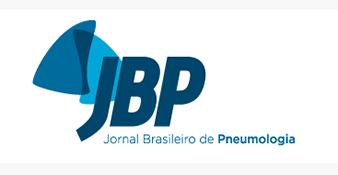Current use and acceptability of novel diagnostic tests for active tuberculosis: a worldwide survey

Citation: Amicosante, Massimo, D’Ambrosio, Lia, Munoz, Marcela, Mello, Fernanda Carvalho de Queiroz, Tebruegge, Marc, Chegou, Novel Njweipi, Seghrouchni, Fouad, Centis, Rosella, Goletti, Delia, Bothamley, Graham, & Migliori, Giovanni Battista. (2017). Current use and acceptability of novel diagnostic tests for active tuberculosis: a worldwide survey. Jornal Brasileiro de Pneumologia, 43(5), 380-392. https://doi.org/10.1590/s1806-37562017000000219
Abstract: Objective: To determine the current use and potential acceptance (by tuberculosis experts worldwide) of novel rapid tests for the diagnosis of tuberculosis that are in line with World Health Organization target product profiles.
Methods: A multilingual survey was disseminated online between July and November of 2016.
Results: A total of 723 individuals from 114 countries responded to the survey. Smear microscopy was the most commonly used rapid tuberculosis test (available to 90.9% of the respondents), followed by molecular assays (available to 70.7%). Only a small proportion of the respondents in middle- and low-income countries had access to interferon-gamma-release assays. Serological and lateral flow immunoassays were used by more than a quarter (25.4%) of the respondents. Among the respondents who had access to molecular tests, 46.7% were using the Xpert assay overall, that proportion being higher in lower middle-income countries (55.6%) and low-income countries (76.6%). The data also suggest that there was some alignment of pricing for molecular assays. Respondents stated they would accept novel rapid tuberculosis tests if available, including molecular assays (acceptable to 86.0%) or biomarker-based serological assays (acceptable to 81.7%). Simple biomarker-based assays were more commonly deemed acceptable in middle- and low-income countries.
Conclusions: Second-generation molecular assays have become more widely available in high- and low-resource settings. However, the development of novel rapid tuberculosis tests continues to be considered important by tuberculosis experts. Our data also underscore the need for additional training and education of end users.
This article is also available in Portuguese.
Methods: A multilingual survey was disseminated online between July and November of 2016.
Results: A total of 723 individuals from 114 countries responded to the survey. Smear microscopy was the most commonly used rapid tuberculosis test (available to 90.9% of the respondents), followed by molecular assays (available to 70.7%). Only a small proportion of the respondents in middle- and low-income countries had access to interferon-gamma-release assays. Serological and lateral flow immunoassays were used by more than a quarter (25.4%) of the respondents. Among the respondents who had access to molecular tests, 46.7% were using the Xpert assay overall, that proportion being higher in lower middle-income countries (55.6%) and low-income countries (76.6%). The data also suggest that there was some alignment of pricing for molecular assays. Respondents stated they would accept novel rapid tuberculosis tests if available, including molecular assays (acceptable to 86.0%) or biomarker-based serological assays (acceptable to 81.7%). Simple biomarker-based assays were more commonly deemed acceptable in middle- and low-income countries.
Conclusions: Second-generation molecular assays have become more widely available in high- and low-resource settings. However, the development of novel rapid tuberculosis tests continues to be considered important by tuberculosis experts. Our data also underscore the need for additional training and education of end users.
This article is also available in Portuguese.
Author(s): Jornal Brasileiro de Pneumologia
Year: 2017
Language: English
Resource Type: Journal Articles
Source: Other
